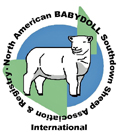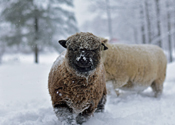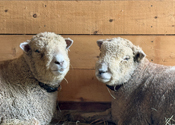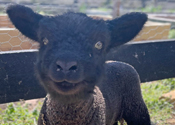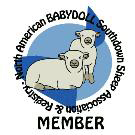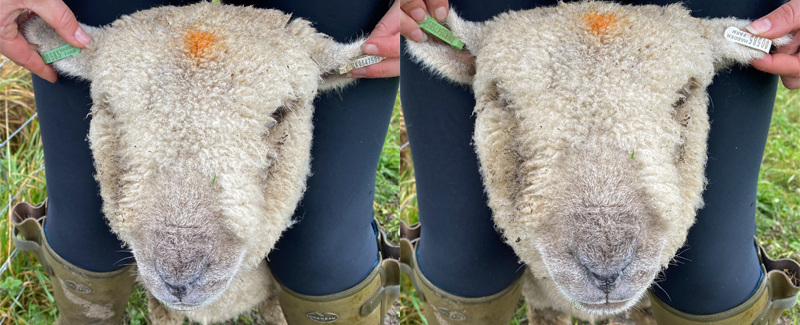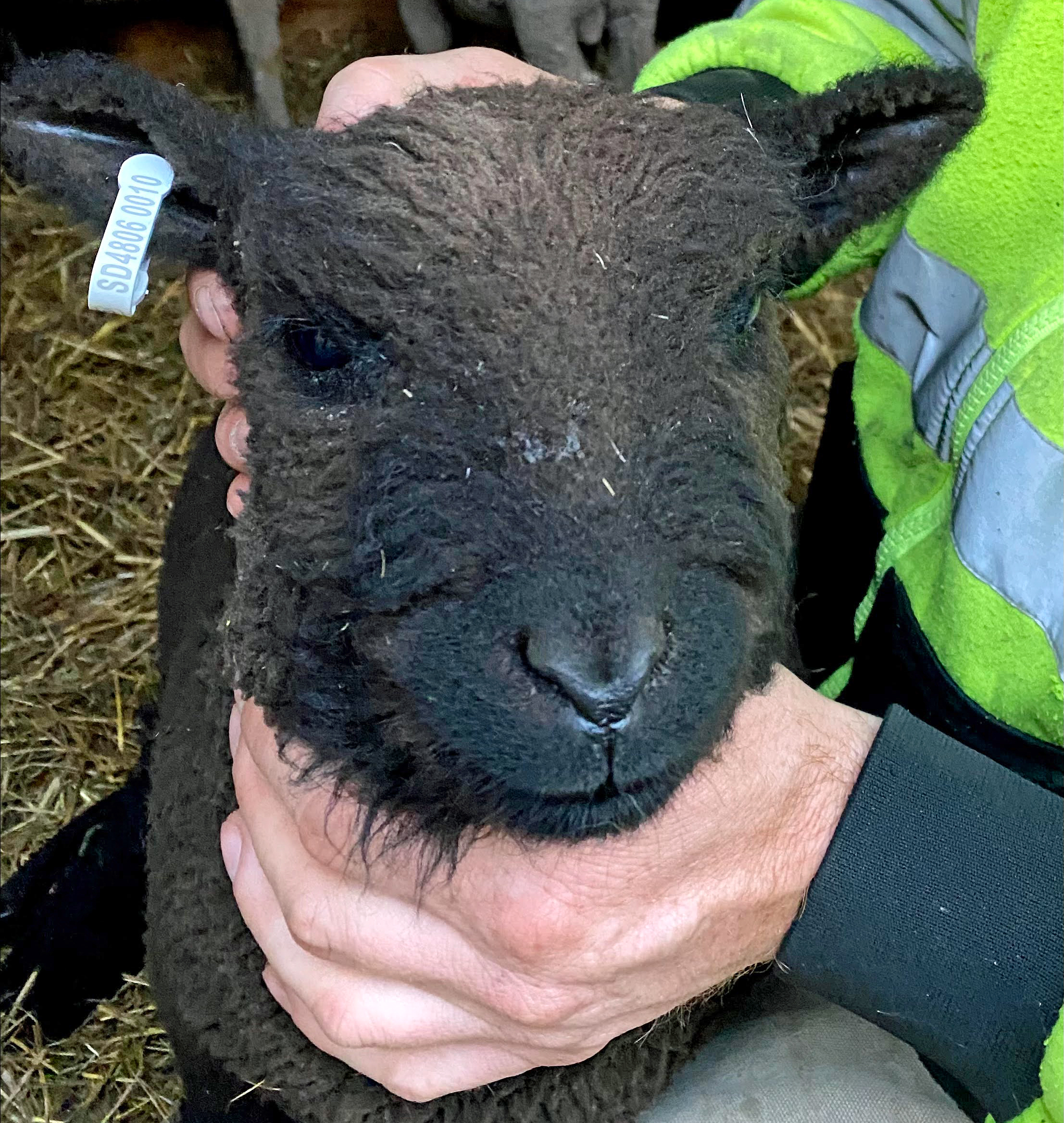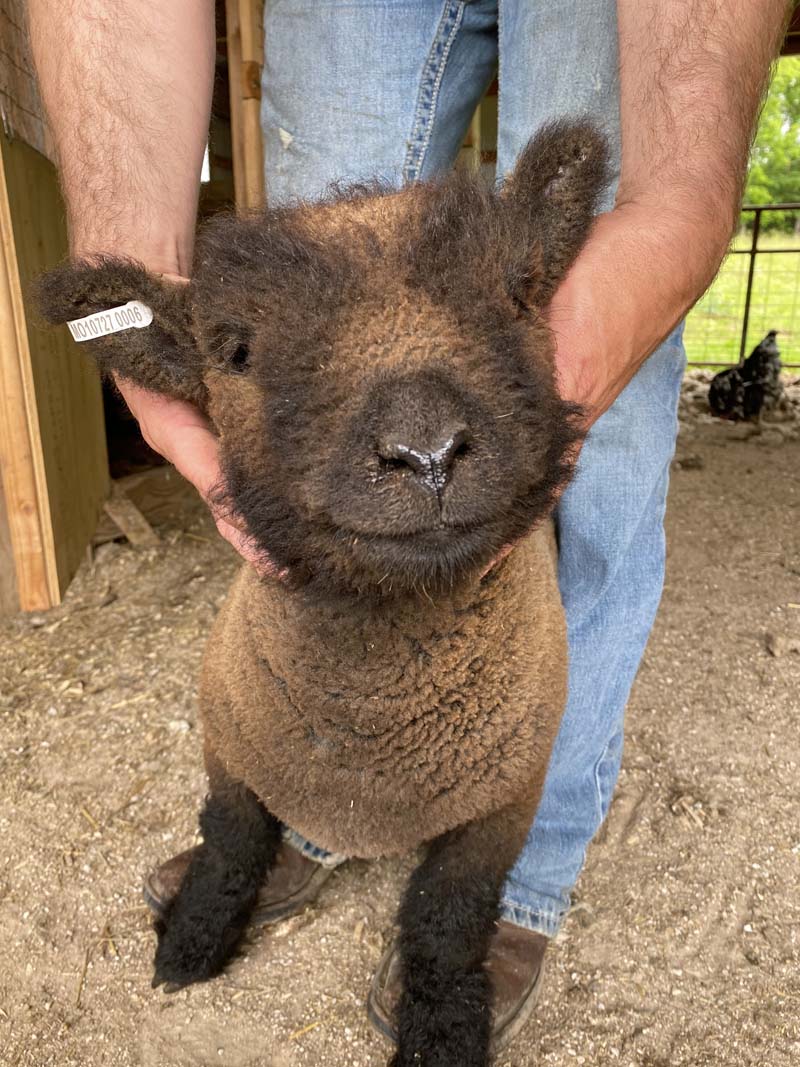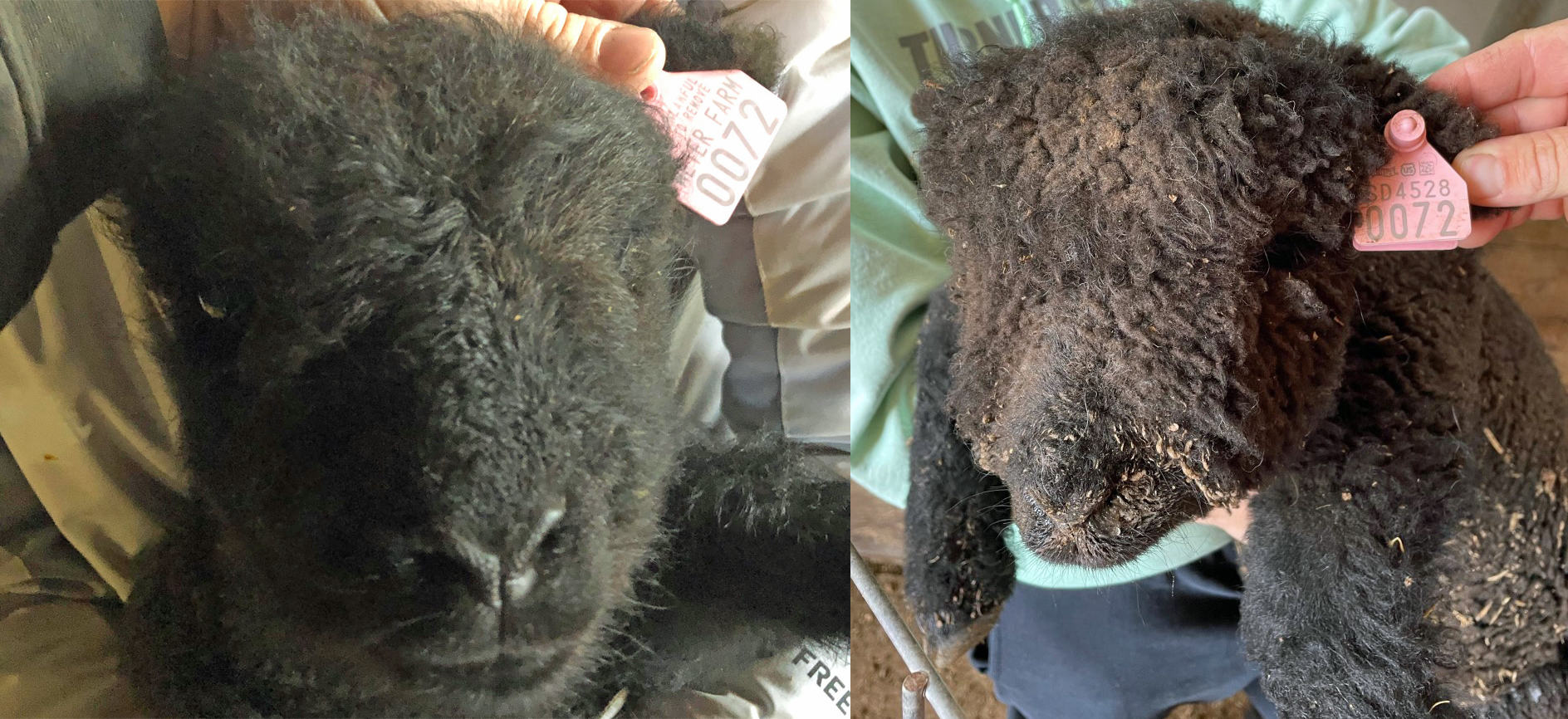Below are
examples of acceptable head shot / ear
tag photos.
Notice the photo of the
off-white sheep with the ear tag
KY6184-1780. It was necessary for the
person holding the lamb to also hold the lamb's ear in a position to
have the tag facing forward.
These two photos are a
very good example of how
to take a photo of two tags, both sides (the sheep's head needed to be
held up rather than the photo being over the top of the sheep though).
Notice the photo on the left,
the
ear with the green tag is being held so we see the back of the ear and
the ear with the white tag is being held so we see the front of the
ear. In the photo on the right, the ears are being
held
opposite, the ear with the green tag is being held so we see the front
of the ear and the ear with the white tag is being held so we see the
back of the ear. This presents both sides of the tags to us.
However, the photos need to be looking directly at the sheep's
face,
not over the sheep. We want to see the mouth and nose leather, both
eyes,
both ears, and the scrapie tag ID numbers.
The two photos above are
examples of the
Canadian
ear tags. The Canadian breeders do not have an assigned flock
number, their tags are just issued in numerical order as the producer
orders them. All Canadian "scrapie" tags will start with 124 (the
country code) 000 (range that may designate animal breed, not currently
used; and the rest of the number, for sheep, will fall into
124,000,310,000,000 - 124,000,319,999,999 or
124,000,500,000,000 - 124,000,549,999,999.
Sometimes, it will be
necessary to take two photos to submit for one
sheep. If the owner uses smaller tags or if they use the small
metal tags it may not be possible to have the sheep's face in the photo
and also
have the tag be readable. In this case, take the best photo
you can showing the face and the tag, then take a close up of the tag
with enough of the sheep's face in the photo so the registrar would
know it was the same sheep.
The tags in the photos
above are the tags currently (since 2021)
being
issued by the The United States Department of
Agriculture’s Animal and Plant Health Inspection Service
(APHIS), National Scrapie Eradication Program. Are you new to sheep and the MANDATORY National
Scrapie Eradication Program (NSEP)?
Click here to
get
started and request a
premises ID # for your farm & flock ID # for your sheep. These
are needed to order Scrapie ear tags
for your BABYDOLLS.
1-866-USDA-Tag
(866-873-2824)

Below are
examples of photos that
are not acceptable head shot / ear
tag photos.

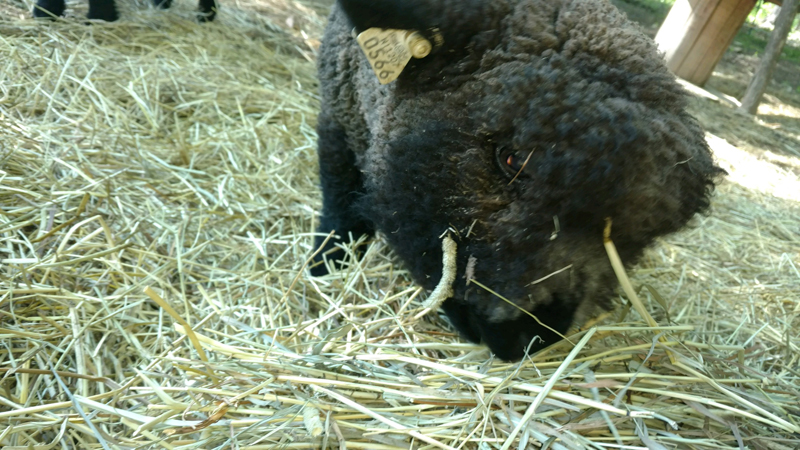
In the first photo, part
of the sheep's head is missing. The
shot was not a straight on head shot in the second photo but rather
from above the sheep.
The shot was not a
straight on head shot in the first photo. In the
second photo, half of the sheep's head is missing.
In this photo, none of
the sheep's face is showing, only the tag. If it
was a case of only the sheep ID number (0003) was on
the inside of the ear, the sheep's ear needed to be held with this
piece (the female piece) of the ear tag facing forward as mentioned in
one of the sets of photos above.
The photo on the left is
not showing the COMPLETE ID number. The member
had to retake and resubmit a photo and it was
necessary to turn the ear so the the complete ID number was showing. On
the two piece-tags, the complete number is
printed on the female piece of the tag (the button). Insert
the tag so the button is inside the ear which also aids in retainabilty
of the tag because it isn't as likely to get caught on fencing. Also,
take your photos looking directly at the sheep's face, not over the
sheep.

Starting in 2026, any sheep born in 2025 and after will require a
height photo to be submitted for any registrations/transfers requested
during year 2, 3, & 4 of the sheep's life. Below is
an example of what we are
looking for. In this photo, the entire sheep is visible. The sheep is
standing on level ground. The
vertical yardstick has the 24" height marked. The yardstick is pushed
down into the wool for an accurate height. If your sheep has
not been recently sheared, this is necessary. Also keep in
mind, if the sheep's hooves have not been recently trimmed, they can
add height to the sheep. Not necessary; but,
a small level is taped to the horizontal ruler which makes it easier to
know you're getting an accurate height photo by holding the yardstick
level. A bonus in this photo is you can also see the sheep's ear tag
number so we know it is the same sheep you're submitting the package
for. Another bonus - not required - is the height of the sheep
has been added to the photo.
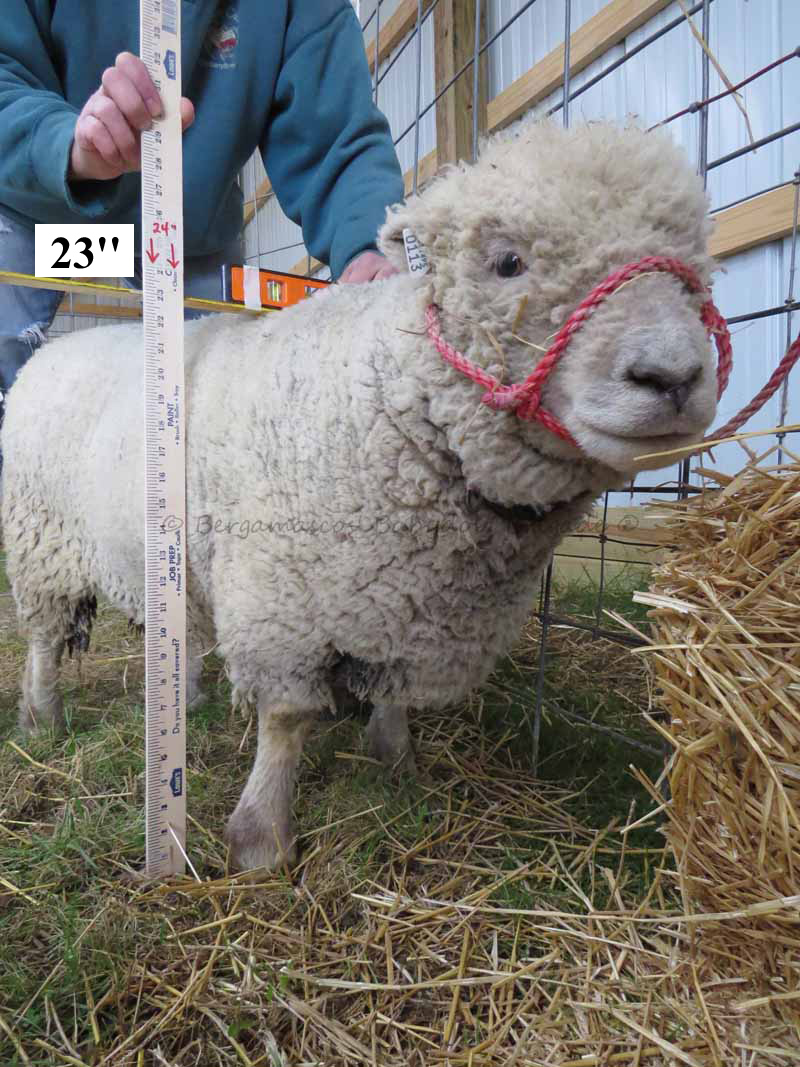
For those purchasing their own ear tags from a tag company, here is a
handy chart showing the tags in the order of readability. Choosing
colors on the left end will make it easier to take a
photo
of the
writing on the tag.
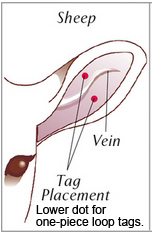
The USDA mandatory National Scrapie Eradication Program, at shearers'
request, ask tags be placed in the sheep's left ear (although not
mandatory). Above is an illustration of where to place the
tags. Two-piece tags should be placed so the complete scrapie
tag ID number is on the inside of the ear. This is usually
the tag piece with the button on it. Having the button on the
inside of the ear also helps with retainability.
